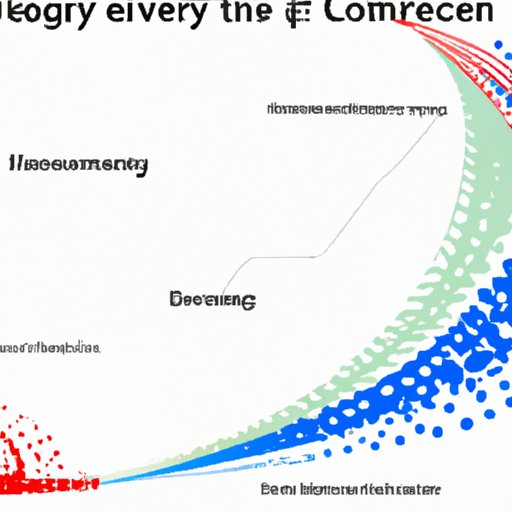Introduction
When it comes to the age of the universe, there are many questions that arise. How old is the universe thought to be? What evidence has been used to support this estimate? What theories have been proposed to explain its age? This article will explore these topics and more, delving into the fascinating history of the universe’s age and examining the scientific evidence that has been used to determine its current estimate.
Definition of the Age of the Universe
The age of the universe is defined as the amount of time that has passed since the Big Bang, which is believed to be the event that marked the beginning of the universe. It is typically measured in billions of years, and estimates for its age range from 12 to 14 billion years old.

Overview of the Current Estimate
The current estimate for the age of the universe is 13.8 billion years old. This estimate was derived from a combination of astronomical observations, cosmological models, and the redshift of galaxies. This estimate is in agreement with other estimates, such as the age of the oldest stars in the Milky Way Galaxy, which is estimated to be 12.6 billion years old.

Exploring Different Theories on the Age of the Universe
Over the years, several different theories have been proposed to explain the age of the universe. These include the Big Bang Theory, the Steady State Theory, and the Oscillating Universe Theory. Let’s take a closer look at each one:
Big Bang Theory
The Big Bang Theory is the most widely accepted theory of the origin of the universe. According to this theory, the universe began approximately 13.8 billion years ago in an incredibly hot and dense state. This initial state then expanded rapidly, leading to the formation of galaxies, stars, and planets.
Steady State Theory
The Steady State Theory was proposed as an alternative to the Big Bang Theory. According to this theory, the universe is infinite in age, and new matter is continuously created as the universe expands. This theory has largely been disproven by modern observations, including the discovery of the Cosmic Microwave Background radiation.
Oscillating Universe Theory
The Oscillating Universe Theory proposes that the universe undergoes cycles of expansion and contraction, with each cycle lasting for billions of years. This theory has not yet been verified by observation, though some aspects of it may still be accurate.
A Timeline of the Universe: How Old is it?
Throughout history, scientists have attempted to answer the question of how old the universe is. Here’s a timeline of some of the most notable attempts:
Historical Estimates
In the 5th century BCE, Ancient Greek philosopher Anaximander estimated that the universe was infinite in age. In the 3rd century BCE, Hellenistic astronomer Aristarchus of Samos proposed that the universe was between 18 and 20 million years old. In 1610, Italian philosopher Giordano Bruno estimated that the universe was infinite in age. In 1650, English mathematician Thomas Digges suggested that the universe was infinite in age.
Recent Calculations
In 1927, Belgian astronomer Georges Lemaître proposed that the universe began with the “Big Bang,” an incredibly hot and dense state. In 1929, American astronomer Edwin Hubble observed that the universe is expanding and proposed that it had an origin in the distant past. In 1965, American physicists Arno Penzias and Robert Wilson discovered the Cosmic Microwave Background radiation, providing further evidence of the Big Bang Theory. In 1998, American astrophysicist Adam Riess and his team used observations of distant supernovae to calculate the age of the universe to be 13.7 billion years old.

Examining the Evidence: How Scientists Determine the Age of the Universe
So how do scientists determine the age of the universe? Let’s take a closer look at some of the evidence they use:
Astronomical Observations
Astronomical observations, such as those made by Edwin Hubble, are used to measure the rate at which the universe is expanding. This information is then used to calculate the age of the universe.
Cosmological Models
Cosmological models, such as the Lambda-CDM model, are used to simulate the evolution of the universe over time. This allows scientists to make predictions about the universe’s age based on their observations.
Redshift of Galaxies
The redshift of galaxies is used to measure the distance between them and the Earth. This information can then be used to calculate the age of the universe.
Debunking Myths: How Old is the Universe Really?
Despite the current estimate of the universe’s age, there are still many myths and misconceptions surrounding its age. Let’s take a look at some of these myths and debunk them:
Common Misconceptions
One common misconception is that the universe is only a few thousand years old. This is incorrect, as the universe is estimated to be 13.8 billion years old. Another common misconception is that the universe is infinitely old. This is also incorrect, as the universe is estimated to have a finite age.
Realistic Expectations
Given the evidence we have, it is reasonable to expect that the universe is approximately 13.8 billion years old. This estimate is based on a combination of astronomical observations, cosmological models, and the redshift of galaxies. While it is possible that the universe is older or younger than this estimate, it is currently the most reliable estimate of the universe’s age.
Conclusion
In conclusion, the age of the universe is estimated to be 13.8 billion years old. This estimate is based on a combination of astronomical observations, cosmological models, and the redshift of galaxies. There are several myths and misconceptions surrounding the universe’s age, but the most reliable estimate is 13.8 billion years old.
(Note: Is this article not meeting your expectations? Do you have knowledge or insights to share? Unlock new opportunities and expand your reach by joining our authors team. Click Registration to join us and share your expertise with our readers.)
